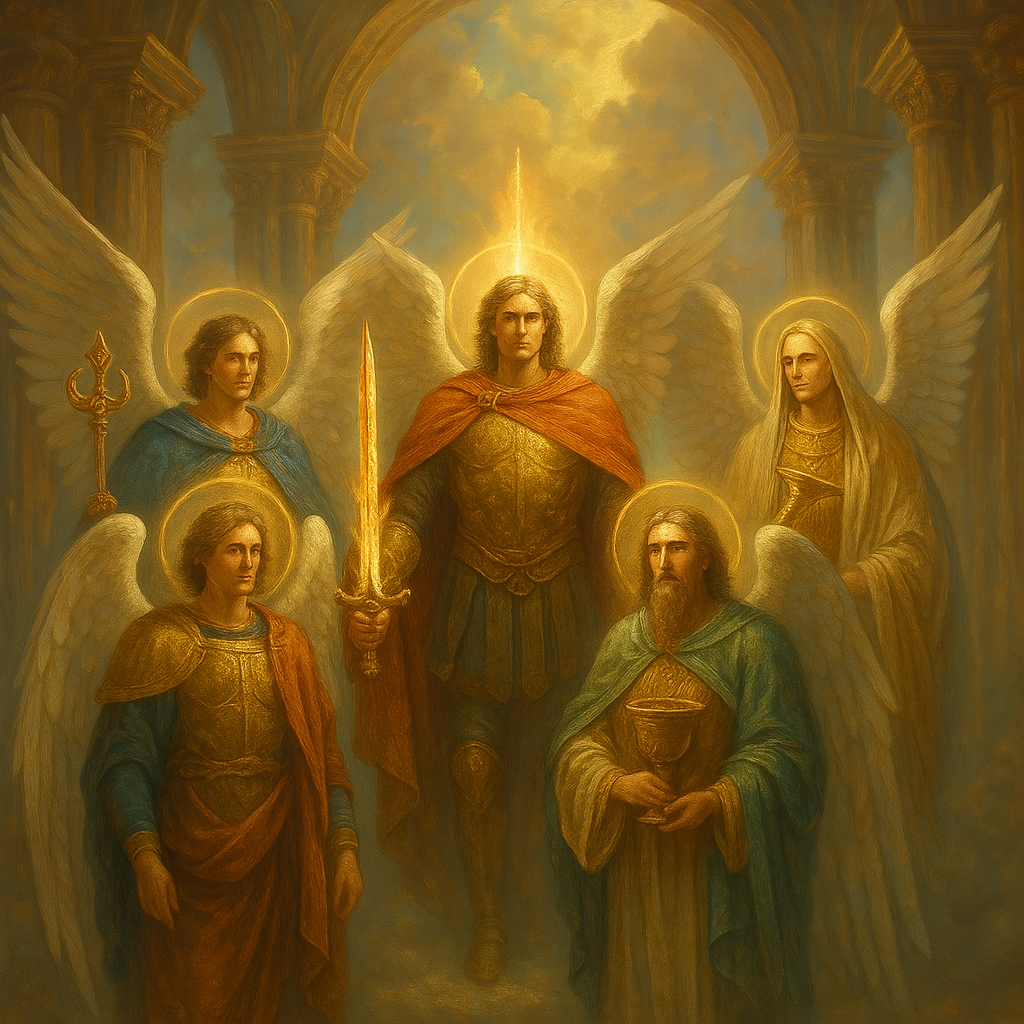Overview
Archangels are high-ranking angels found in various spiritual traditions, including Judaism, Christianity, and Islam. Distinguished from other angels by their vast powers and higher responsibilities, archangels are often depicted as God’s chief messengers and warriors. Each archangel has specific duties and roles, ranging from overseeing divine justice to offering healing and guidance to humanity.
Theological and Spiritual Frameworks
Judaism
- In Jewish texts, archangels such as Michael, Gabriel, and Raphael play crucial roles in the spiritual hierarchy, acting as protectors of Israel, bearers of revelation, and agents of healing.
Christianity
- Christianity recognizes several primary archangels, with Michael, Gabriel, and Raphael being the most commonly venerated. Each has distinct roles within Christian theology, such as Michael being a protector against evil, Gabriel as a messenger of God, and Raphael as a healer.
Islam
- Islam also includes beliefs in archangels, with Jibreel (Gabriel) delivering revelations to the prophets, Mikail (Michael) providing nourishments for bodies and souls, and Israfil responsible for blowing the trumpet in the end times.
Roles and Responsibilities
Michael (Who is like God)
- Role: Protector and leader of God’s army
- Responsibilities: Defeats evil forces, clears obstacles, and empowers leaders and believers to overcome fear and adversity.
Gabriel (Strength of God)
- Role: Messenger of God
- Responsibilities: Delivers important messages from God to humans, often regarding significant life events and divine insights.
Raphael (God Heals)
- Role: Healer
- Responsibilities: Heals the earth and its inhabitants, guides healers and travelers, and supports healing on all levels.
Uriel (Light of God)
- Role: Wisdom and repentance
- Responsibilities: Brings enlightenment to individuals, helps in decision-making, and aids in the resolution of conflicts.
Chamuel (He who sees God)
- Role: Love and peace
- Responsibilities: Helps in finding love, repairing broken relationships, and overcoming anxiety.
Jophiel (Beauty of God)
- Role: Beauty, art, and creativity
- Responsibilities: Inspires artists, beautifies and harmonizes surroundings, and helps people see the beauty in life.
Zadkiel (Righteousness of God)
- Role: Mercy and benevolence
- Responsibilities: Encourages forgiveness, mercy, and helps in letting go of resentment and anger.
Access and Communication
Invocation and Prayer
- Archangels can be invoked through prayer, meditation, or by calling upon their names during times of need.
Symbols and Sigils
- Each archangel has specific symbols or sigils associated with their power, which can be used to strengthen their presence in rituals or daily life.
Angelic Correspondences
- Different archangels are associated with particular days of the week, colors, and crystals, which can be utilized to align more closely with their energies.
Cultural and Symbolic Significance
Art and Iconography
- Archangels are commonly depicted in religious art with distinctive attributes like Michael’s sword or Gabriel’s trumpet, symbolizing their roles and powers.
Literature and Media
- Archangels are popular figures in literature and media, often portrayed as central figures in stories exploring themes of good vs. evil.
Conclusion
Archangels are powerful spiritual entities revered across multiple religions and spiritual traditions. Their roles as protectors, healers, and messengers highlight their importance in the celestial hierarchy and their close interaction with the human realm. Understanding the specific attributes and roles of each archangel can help individuals seeking spiritual guidance and support in various aspects of their lives.

